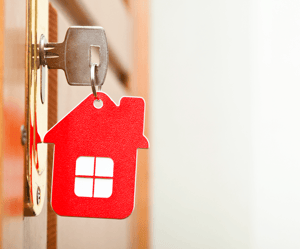Banks and financial experts will always recommend homebuyers save up a minimum of 20% for their down payment, but that's just not always possible in every situation. Putting a down payment of 20% of the purchasing price is a great way to get lower monthly payments for your mortgage, as well as reduce the price of mortgage and other home insurance, but what happens when you're unable to save enough for that 20% down payment?
Calculating Benefits Versus Risks
You probably began saving for your down payment the moment you knew you were in the market to buy a home. The question that often comes up for many people is what to do when you find a home you love, but your savings are less than 20% of the purchase price. The calculation then becomes whether it's better to keep saving until you have amassed a 20% down payment or whether to act now and get the home of your dreams.
In order to do that, you'll have to calculate the benefits of waiting versus the risk of not getting the house that you really want.
 The Benefits of Having a 20% Down Payment
The Benefits of Having a 20% Down Payment
If you can use a combination of your own savings, contributions from family, and perhaps even some windfall income, then 20% of the down payment is certainly the smartest choice. When you have the 20% down payment, you'll pay less interest on your mortgage and you'll be exempt from having to buy mortgage insurance.
Another great benefit to putting the full 20% down on your new home is that you'll soon be free from having to pay rent, and you'll lock in the price of the home without fear of the price going up in the near future.
But spending that large chunk of money you've carefully put aside can be a risk. For one, you'll no longer have the option of spending that money on something else. Also, you may get stuck with a mortgage that will be a burden to pay if the value of the home drops and you're looking to sell it.
The Downside of Not Having the 20% Down Payment
Right away, it's important to know that you'll definitely be paying more interest on your mortgage if you're unable to scrape together the 20% down payment. On top of that, Canadian law requires home buyers to purchase what is known as mortgage insurance.
There may be some benefits to waiting and continuing to save, however. Your nest egg will continue to grow and you'll be able to access that money for an emergency or other needs. In some cases, you may get lucky and the price of your dream home falls and/or interest rates on mortgages go down. The downside is that if you do decide to act now, you'll be taking on a higher debt load that may cause problems down the line.
Second Mortgages
In some cases, home buyers may need to carry two mortgages simultaneously. The first mortgage is a regular mortgage, a loan with interest to be used for buying the home.
Then you would get a second mortgage, from a different lender to cover the balance of what is owed on the home that isn't covered by the first loan. Now, the second mortgage usually has a higher interest rate from your primary mortgage because if you do have to sell the home, your first mortgage has priority to receive the monies from the sale. This means your second mortgage will get whatever is left after the primary mortgage is paid out.
 Canadian Mortgage Law
Canadian Mortgage Law
Mortgage law in Canada is very clear about mandatory protections to ensure that home buyers do not take on more debt than they can reasonably afford. Anyone buying a home without a 20% (or higher) down payment is obligated to buy mortgage insurance from the Canadian Mortgage and Housing Corporation (CMHC) or two authorized private companies in order to balance the risk of the loan.
Mortgages involving down payments of less than 20% are classified as high ratio, referring to the ratio of money put forth by the borrower versus the amount of money borrowed from the bank.
Canadian law allows home buyers to pay their mortgage insurance payments either monthly or in a lump sum upon purchase of the home. If mortgage insurance payments are made monthly, you'll be required to pay interest, which is an additional cost.
Prior to February 15, 2016, Canadian law allowed home buyers to pay just a 5% down payment for any property valued at less than one million dollars. Today, the law requires a minimum of a 5% down payment for the initial $500,000 of the purchase price and then 10% for the portion of the price in excess of $500,000.
When you go to a bank or a financial lender to apply for a mortgage, the lender is required to calculate something known as the Gross Debt Service (GDS) ratio. This refers to the total projected monthly costs for the new house (including utilities) and what percentage these constitute of your (individual or family's combined) monthly income. Canadian law prohibits mortgages for individuals with a GDS ratio higher than 32%, meaning that total projected household expenses are 32% or higher of your monthly income.
In Conclusion...
Ideally, every homebuyer will be able to put 20% or more as a down payment towards the purchase of the home. This will allow homebuyers to avoid paying for compulsory mortgage insurance and lock in more favourable interest rates on the mortgage. Sometimes it's worthwhile to keep waiting and saving in order to achieve this 20% threshold but savvy buyers have a number of options available in order to secure their dream home before they have saved 20% of the purchase price.
Before purchasing any home or preparing for your mortgage application, carefully consider all of your options and be aware of the risks and benefits involved.




